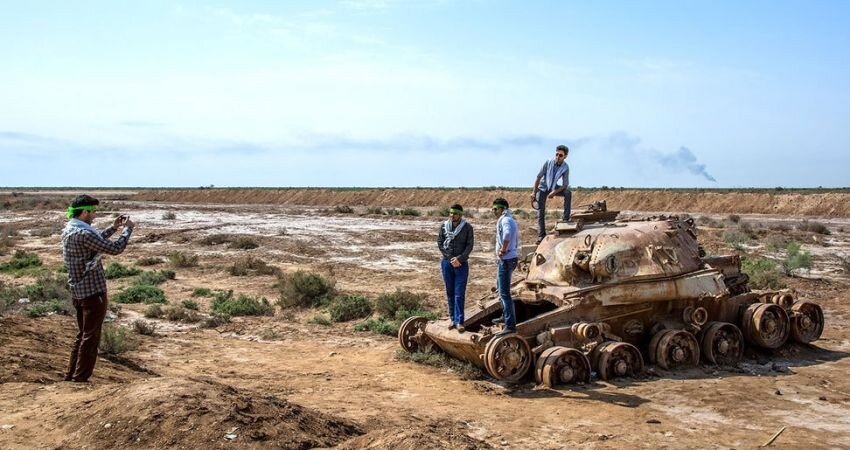Sacred Defense era’s symbols to be preserved for tourism

TEHRAN – Preserving the symbols of the Sacred Defense era as tourist attractions is of high importance, an official with the tourism ministry has said.
These remnants, along with all other cultural heritage of the country, must be safeguarded and conserved to serve as a means of introducing the new generation and the future to "Sacred Defense tourism," IRNA quoted Seyyed Mostafa Fatemi as saying on Sunday.
In his remarks, Fatemi underscored the significance of preserving the historical artifacts from the Sacred Defense era, a period marked by the heroic resistance of Iranians during the eight-year Iran-Iraq war.
He emphasized the need to protect these tangible symbols, such as war memorials, museums, and battlefields, to effectively create a unique tourism experience.
while there have been recent developments in cinema, theater, literature, poetry, and music to showcase the values, symbols, and monuments of the Sacred Defense era, visiting these sites and their remnants in the western and southwestern regions of the country is critical to educate the new generation on Iranian history, he added.
He noted that efforts are underway to preserve the Sacred Defense era symbols and make them appealing tourist destinations, similar to other cultural heritage sites in the nation.
Moreover, he added that symposiums and specialized tourism congresses have occurred in Qom, Bushehr, and Gilan provinces to promote resistance tourism, with the goal of attracting foreign Shia Muslim tourists.
Earlier this week, the deputy tourism minister Ali-Asghar Shalbafian announced that Iran’s tourism ministry is set to facilitate visits to former war zones in the west and southwest of the country.
“We are trying to promote and facilitate visits to [museums and former war zones and] sites that are associated with the Sacred Defense,” he said.
“An approach is to offer integrated tours to visitors of historical, cultural, and ancient places in the west and southwest of the country,” he added.
The 1980-1988 Iran-Iraq, locally marked as Sacred Defense, was launched by the order of former Iraqi President Saddam Hussein nearly 19 months after the victory of the Islamic Revolution.
For those interested in visiting an epitome of the frontline elsewhere from the former battlefields, Tehran embraces several destinations; the Sacred Defense Museum, Tehran Peace Museum, and Behesht-e Zahra—a graveyard where many of the martyrs are buried. The epic-scale Sacred Defense Museum does bargain something different in modern Iranian history where you can delve into wreckages of rockets, tanks, rifles, vessels, mortars, radars, air defense systems, grounded jets, military supplies, and artillery pieces amongst others.
The museum is equipped with a state-of-the-art visual system, including projections and video walls, while audio recordings relevant to each period contribute to its charm. The recreation of the liberation of the city of Khorramshahr using virtual exhibits and video projections is among the main features of the museum, where a replica of the Khorramshahr Mosque is adorned with creamy and turquoise patterned tiles.
Amongst various border cities directly involved in the war, Khorramshahr is highly honored as a symbol of resistance during the war against Iraqi invaders. The port city is high on the ‘will go’ index of adventure travelers interested in such niche tourism.
When it comes to civilians, war destinations formerly were objects of interest for many photojournalists appearing solely on pages of crime, but now they can be traced within certain travel books and websites.
Experts say former war zones and museums are sometimes triggered to make guesses about the stories of people who lost their lives, displaced, wounded, captured, or lost their loved ones in those bitter moments of mankind.
The Iran-Iraq War was the second-longest war of the 20th century after the Vietnam War.
SAB/
